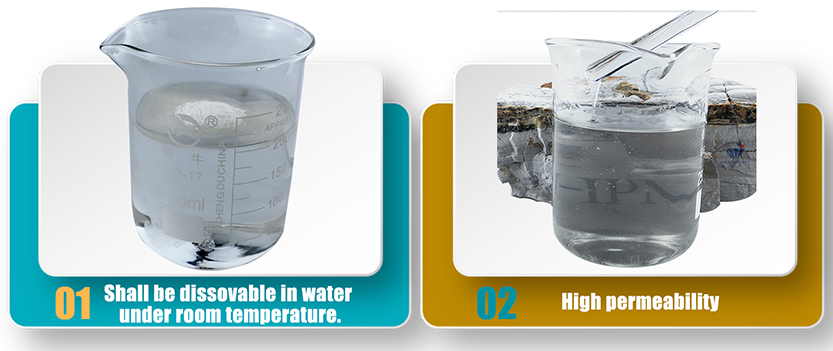
Oct . 04, 2024 12:10 Back to list
Exploring the Impact of HPMC and SDS on Material Properties and Applications
Understanding HPMC SDS An Overview
Hydroxypropyl Methylcellulose (HPMC) is an important cellulose derivative widely used in various industries, including pharmaceuticals, food, and cosmetics. As an excipient, HPMC offers multiple functionalities that enhance product performance. This article focuses on the significance of HPMC, its properties, applications, and safety data sheets (SDS), providing a comprehensive understanding of the substance.
What is HPMC?
HPMC is a semi-synthetic polymer derived from cellulose. It is created by modifying cellulose through a series of chemical reactions that introduce hydroxypropyl and methyl groups. This modification imparts unique properties, such as increased solubility in water, film-forming capabilities, and thickening potential, making HPMC an invaluable ingredient in many formulations.
Properties of HPMC
HPMC displays a range of properties that contribute to its utility
1. Solubility HPMC is soluble in cold water, forming a gel-like solution. This characteristic is crucial for applications in both pharmaceuticals and food products.
2. Viscosity The viscosity of HPMC solutions can vary significantly based on its molecular weight and concentration. This property allows formulators to tailor the viscosity based on specific application requirements.
3. Film-Forming Ability HPMC can form a cohesive, flexible film upon drying, which is advantageous for coatings and controlled release applications in pharmaceuticals.
4. Stability HPMC is chemically stable and resistant to a wide range of pH levels, making it suitable for various environments.
5. Non-toxic HPMC is generally regarded as safe (GRAS) by regulatory agencies, making it a popular choice in food and pharmaceutical formulations.
Applications of HPMC
The versatility of HPMC allows it to be utilized across various sectors
1. Pharmaceuticals HPMC serves as a binder, thickener, and controlled-release agent in tablet formulations. It is also used in suspensions and gel formulations due to its stabilizing properties.
2. Food Industry In food products, HPMC acts as a thickener, emulsifier, and texture enhancer. It helps maintain moisture and improve mouthfeel in items such as sauces, dressings, and gluten-free products.
hpmc sds

3. Cosmetics HPMC is utilized in cosmetic formulations for its film-forming and thickening properties. It enhances the texture and stability of creams, lotions, and gels.
4. Construction In the construction industry, HPMC is used in tile adhesives, plasters, and paints, providing improved workability, adhesion, and water retention.
Safety Data Sheet (SDS) Overview
The Safety Data Sheet (SDS) for HPMC provides critical information regarding its safe handling and potential hazards. An SDS typically includes the following sections
1. Identification Details the product name, manufacturer, and recommended uses.
2. Hazards Identification While HPMC is generally considered non-hazardous, the SDS outlines any potential risks associated with exposure.
3. Composition/Information on Ingredients Lists the chemical identity, concentration, and any impurities that may affect safety.
4. First-Aid Measures Describes actions to take in case of contact with skin or eyes, ingestion, or inhalation.
5. Fire-Fighting Measures Provides guidance on extinguishing methods in case of fire.
6. Accidental Release Measures Outlines procedures for containing and clean-up in case of spills.
7. Handling and Storage Suggests practices to ensure safe handling and prolonged shelf life.
8. Exposure Controls/Personal Protection Recommends protective equipment and exposure limits, although HPMC poses minimal risk.
9. Toxicological Information Offers insights into potential health effects and routes of exposure.
Conclusion
Hydroxypropyl Methylcellulose (HPMC) is a multifunctional polymer that plays a significant role in various industrial applications. Its unique properties make it an essential ingredient in pharmaceuticals, food products, cosmetics, and construction materials. With a favorable safety profile, the comprehensive information provided in its Safety Data Sheet ensures that users can handle HPMC responsibly and effectively. Understanding HPMC's characteristics and applications can lead to better formulation practices and improved product performance across multiple sectors.
-
Versatile Hpmc Uses in Different Industries
NewsJun.19,2025
-
Redispersible Powder's Role in Enhancing Durability of Construction Products
NewsJun.19,2025
-
Hydroxyethyl Cellulose Applications Driving Green Industrial Processes
NewsJun.19,2025
-
Exploring Different Redispersible Polymer Powder
NewsJun.19,2025
-
Choosing the Right Mortar Bonding Agent
NewsJun.19,2025
-
Applications and Significance of China Hpmc in Modern Industries
NewsJun.19,2025







